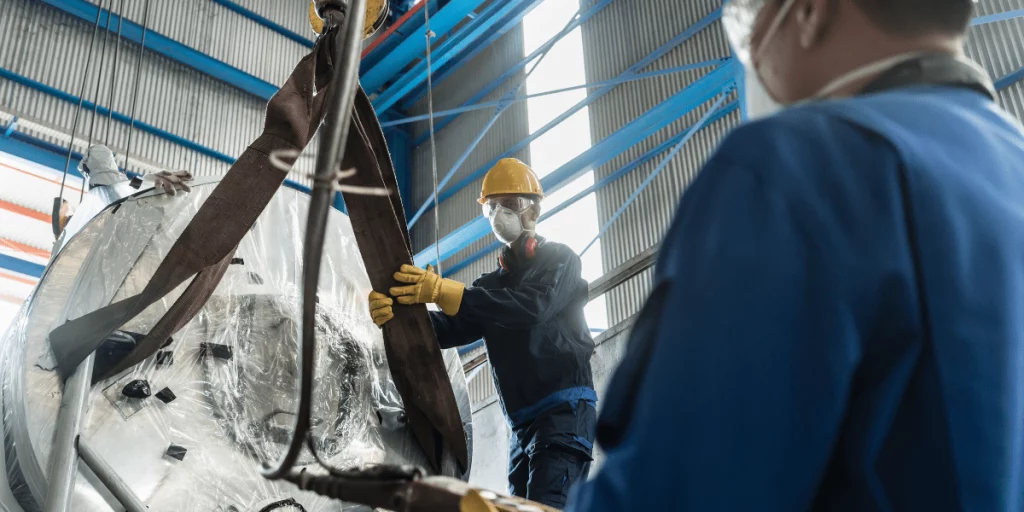What is Overall Equipment Effectiveness?
Overall equipment effectiveness (OEE) is a manufacturing metric that was established by Seiichi Nakajima, the pioneer of Total Productive Maintenance (TPM), in the 1980s. It is used to measure the productivity level of equipment and is made up of three factors. These three factors identify how efficient equipment is during the manufacturing process:
- 1. Asset Availability — How often does the equipment perform when needed?
- 2. Asset Performance — How much product does the equipment produce?
- 3. Production Quality — How many high-quality products does the equipment produce?
One of the biggest goals of implementing an OEE strategy is to try and reduce, or eliminate, the most common causes of equipment-based productivity loss — this is known as the Six Big Losses. So, organizations that strive to achieve world-class OEE ratings should aim to operate with an OEE score of 100%. This means that each product an equipment produces is defect-free (production quality), it is producing as fast as possible (asset performance), and it encounters zero unplanned downtime (asset availability).
In sum, overall equipment effectiveness helps operational leaders to determine underlying losses, eliminate waste, benchmark progress, and improve manufacturing processes.
How to Calculate Overall Equipment Effectiveness
Overall equipment effectiveness is represented as a percentage and is calculated by multiplying availability, performance, and quality.
Calculating Availability
Availability = Run time / Planned Production Time
Calculating Performance
Performance = Planned production Time — Stop Time
Calculating Quality
Quality = Good Count / Total Count
Standard Benchmarks for OEE
Overall equipment effectiveness uses a ranking system to help you determine how your OEE compares to industry standards, in-house equipment, or other shifts working on the same piece of equipment. The benchmarks for OEE are:
— 100 Percent: This means your production is perfect, and your shop-floor is producing only high-quality products, as fast as possible, without any downtime.
— 85 Percent: This means you have above-average production effectiveness, with very few low-quality products, and little to no stop time. An OEE of 85% is considered world class for discrete manufacturers and is a sought-after long term goal.
— 60 Percent: This means the equipment makes mostly good parts quickly with an average amount of stop time. This is a fair rating for discrete manufacturers with opportunities for improvement.
— 40 Percent: This means you have frequent low-quality product, and your equipment runs slowly with a lot of stops. While this is considered low, it is not uncommon for manufacturers who just started to track performance and take initiative to reduce equipment downtime.
The Benefits of Overall Equipment Effectiveness
When correctly implemented, overall equipment effectiveness can benefit organizations in the following ways:
1. Increases return on investment (ROI) for equipment
Manufacturers invest in a lot of equipment and machinery. Therefore, it’s important to maximize the return on investment for these assets. Calculating your OEE rating can help you determine how productive your equipment is, and how you can increase their production levels. If you can obtain a higher product yield from each piece of equipment, you can increase the amount of product you can sell, and decrease the time spent on production. So, by leveraging OEE to improve your equipment production levels, in turn, this can increase the return on your initial investment in equipment.
2. Reduces maintenance costs
Overall equipment effectiveness helps you understand how well your equipment is performing and identifies areas where poor quality is occurring. By reducing the production of poor quality products that either get thrown out or repaired, you can reduce material and repair costs. What’s more, by keeping a close eye on the output and performance of your equipment, you’re able to identify issues that may result in future equipment failures sooner. As a result, this helps your equipment last longer and leads to fewer repairs.
3. Improves product quality
Overall equipment effectiveness helps you monitor the quality of the products being produced. This is because it takes into account the time lost on repairs or products being thrown out due to poor quality. Consequently, by identifying where your process is affected by scraps and repairs, you can adjust your production times and increase the amount of high-quality products being produced.





